Located on the shores of Lake Ontario in Oswego, New York, you’ll find the historic Fort Ontario. This fort has a history dating back nearly 300 years and is open to visitors as Fort Ontario State Historic Site.
Over its history, it’s been attacked and burned three times, the site of a Native American treaty, and the only Jewish refugee camp in the United States during World War 2, among other things. This storied past makes the fort an incredible spot to visit if you love learning about US history.
Today, the fort is located on the outskirts of the city of Oswego in the middle of Fort Ontario Park. The fort that you see today dates to 1830, and it is set up to resemble how it would have looked in 1868. However, there’s a lot of great information about the entire history of the fort.
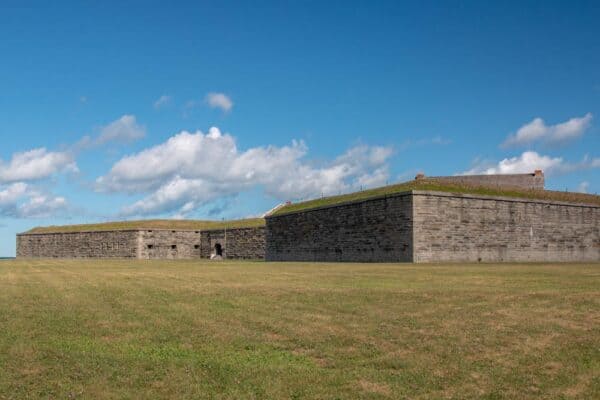
The period of time that’s being covered sets this fort aside from others in New York, such as Fort Stanwix in Rome and Fort William Henry in Lake George, and Old Fort Niagara in Niagara County, and makes it quite interesting to visit even if you’ve been to those other historic sites.
The original Fort Ontario (known then as the Fort of Six Nations) was built in 1755 during the French and Indian War. In 1756, it was burned by the French during the Battle of Fort Ontario, only to be rebuilt again in 1759.
In 1766, the fort hosted a treaty signing between the British and Native American war chief Pontiac. This treaty ended what was known as Pontiac’s Rebellion, an often forgotten period of conflict in the mid-18th century.
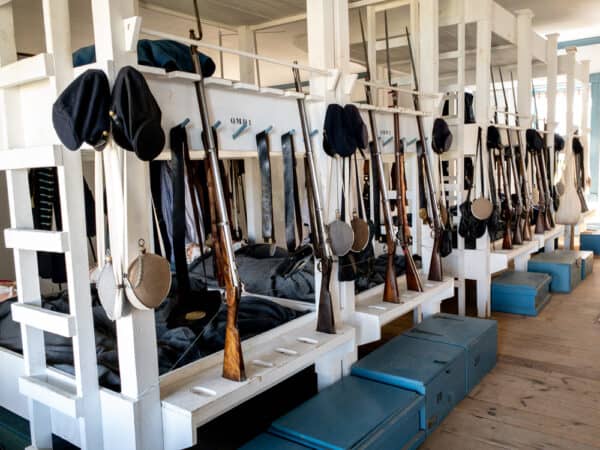
During the American Revolution, the fort was burned by American soldiers in 1778, only to be rebuilt by the British in 1782. In 1814, the British returned the favor by attacking and burning the now American fort during the War of 1812.
It was rebuilt for the final time in 1830, though it was upgraded several times over the next century and a half.
Most interestingly to me, this site became known as the Fort Ontario Emergency Refugee Shelter in 1944 and was the only place in the United States to accept Jews fleeing the Nazis during World War 2.
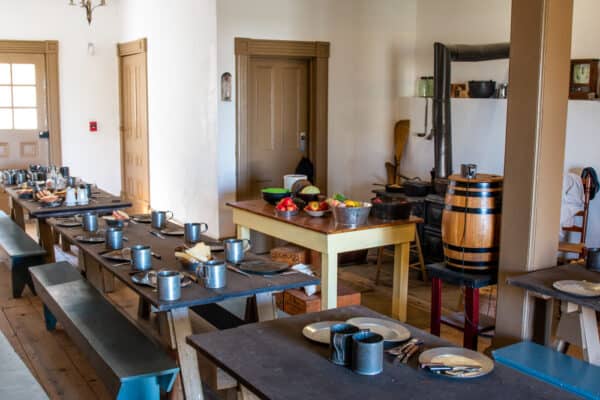
While most of this history is at least touched on in the displays, the main areas of focus are the post-Civil War period and the two years that it served as a refugee shelter.
After entering into the star-shaped fort and paying your admission fee (which is at a booth located in one of the fort’s old guardhouses), you step into the main courtyard of the fort. This is an impressive spot and the entire interior of the fort is laid out in front of you.
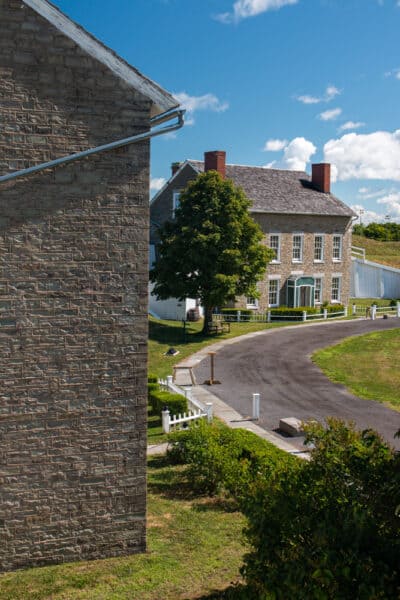
Each of the fort’s four large buildings contain displays about the history of the fort and demonstrate what life was like for those that lived here throughout the fort’s nearly 300 years of existence.
It’s best to visit these buildings in a counterclockwise direction as that will present the story in the most logical way.
When doing so, the first building you come to is the Enlisted Men’s Barracks. The main highlight of this building is the small museum that features artifacts that tell the story of Fort Ontario.
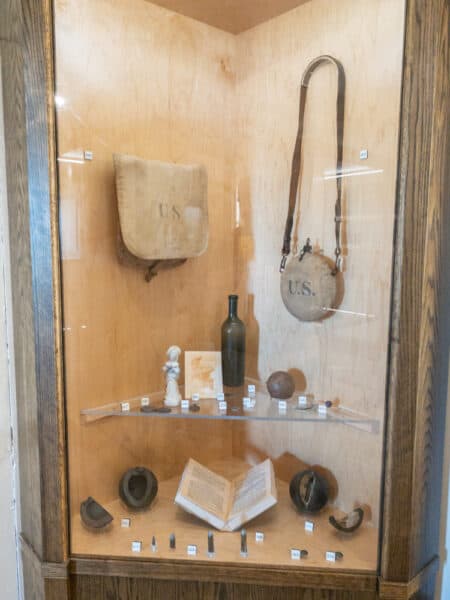
These displays cover much of the fort’s history, from the French and Indian War through its time as a refugee camp in World War 2. There is also a great three-minute film that quickly highlights the history of the fort and surrounding area.
This building also has two historic areas set up: one that showcases the kitchen and dining area for soldiers and one that shows what their sleeping quarters would have looked like. Both offer a really interesting look into the life of a soldier at Fort Ontario.
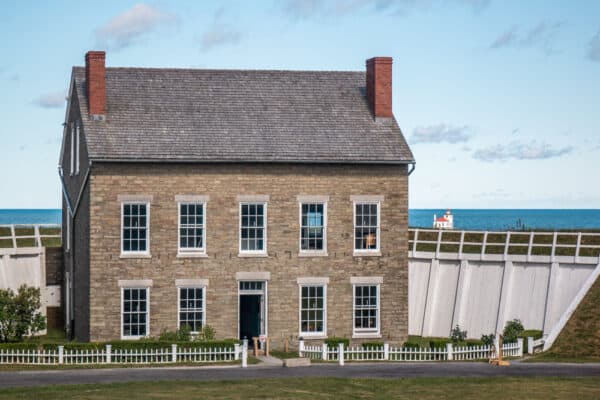
The second large building you come to was once the officer’s quarters. Today, you can tour the first floor of this building, which is filled with photos and videos highlighting the fort’s history as a Jewish refugee camp in World War 2.
Of all the time periods of the fort’s history, this is the one I found most interesting because the story is completely unique. I had a great time browsing through the photos and watching the video that highlighted the stories of some of the people that had lived here for two years in the mid-1940s.
I hope someday to return to explore the Safe Haven Holocaust Refugee Museum, which is located in a historic building nearby, since that museum was sadly temporarily closed during my visit to the area.
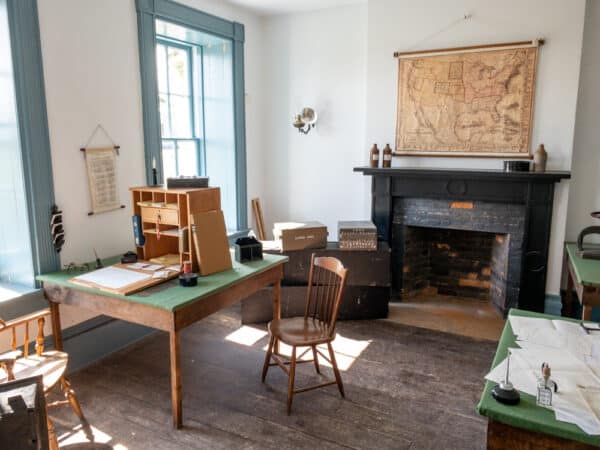
The third building on the property features several rooms set up as the fort’s offices and work areas would have likely appeared in the summer of 1868. Given that this post Civil War period isn’t often portrayed, it was interesting to see this era and compare it to Civil War sites I have visited in the past.
In addition to the interior displays, there are plenty of things to check out around the fort.
For example, make sure to take some time to climb the earthen hills and look out over the walls of Fort Ontario. From here, you can see, depending on which way you look, the beautiful Lake Ontario, Fort Ontario Park, and the city of Oswego.
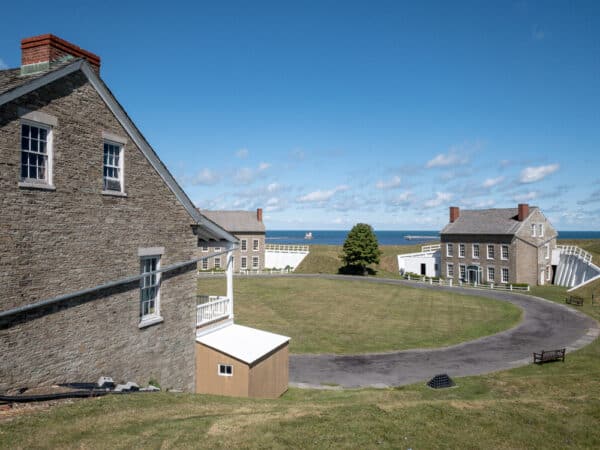
Another spot in this upper area to see is two of the fort’s casemates. These are underground areas that were used for storage during the Civil War and the era following it.
While there isn’t anything down here, I still found these underground areas to be quite interesting to see.
Another nice aspect of the fort is that there are periodic talks and demonstrations at the fort throughout the day.
During my visit to Fort Ontario, I was able to see a soldier in period clothing demonstrate how they fired a gun in the 1860s. If you’ve never seen a demonstration like this, it can be quite a nice educational experience.
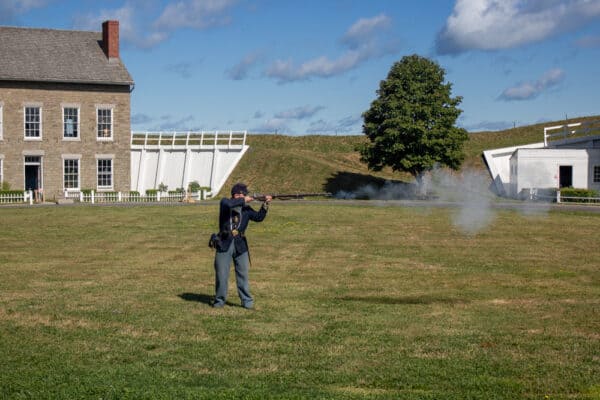
It should be noted that, outside of the fort, there are a lot of signs that cover the history of the area. I definitely recommend taking a few minutes to check them out before leaving. They also are a great way to learn about the fort if you happen to visit when it’s not open to the public.
Overall, Fort Ontario State Historic Site is a great spot to check out when visiting Oswego County and the entire Thousand Island’s region. This is especially true if you love learning about the history of New York and the United States.
Because of that, I definitely recommend adding this fort to your list of spots to check out when exploring the region.
Looking for more places to visit nearby? Check out Salmon River Falls, Wolcott Falls, and Chimney Bluffs State Park.

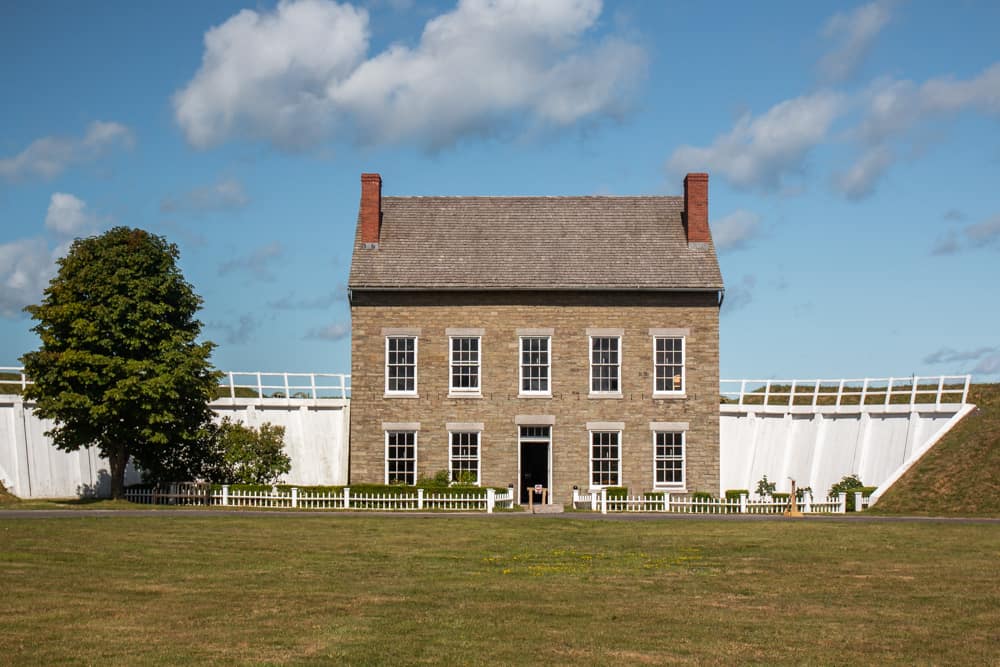
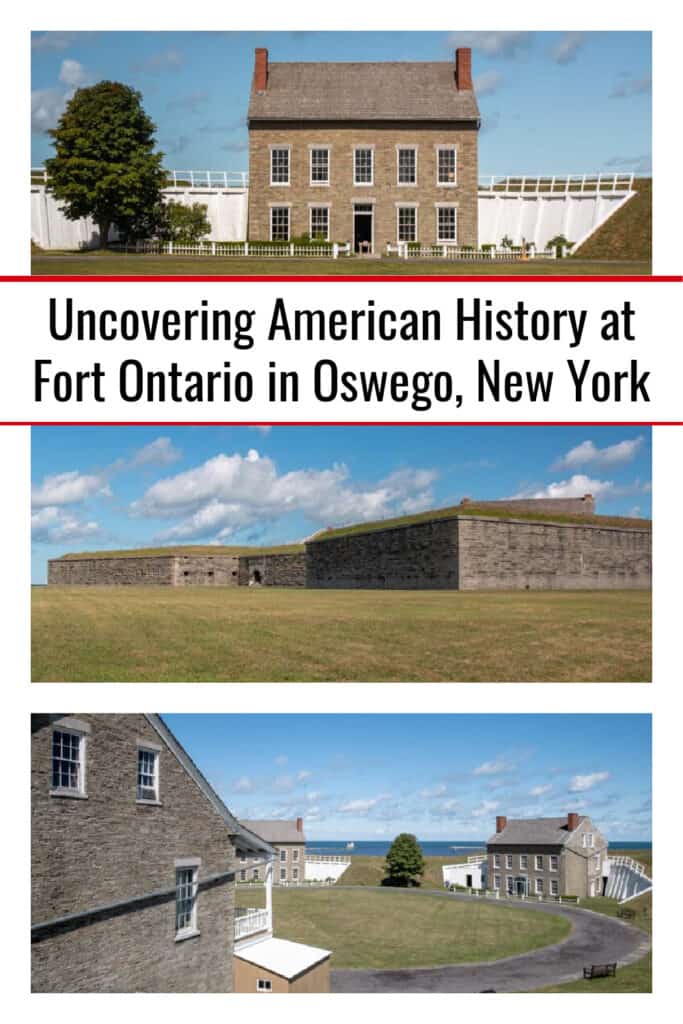
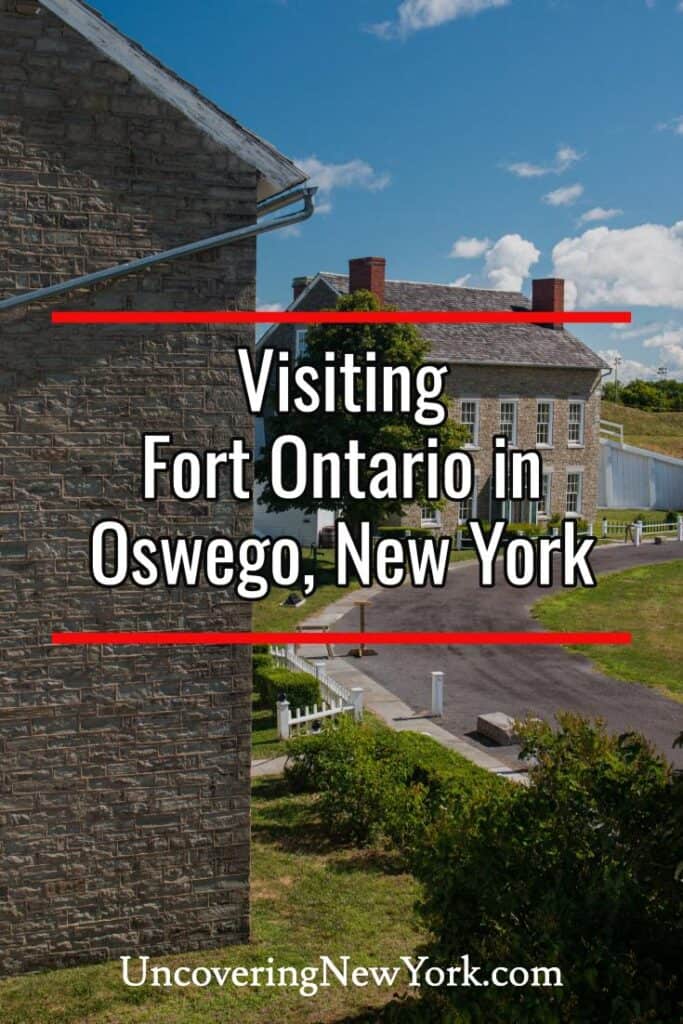

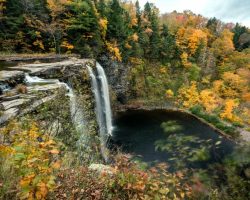

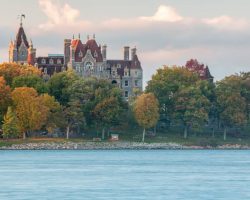

Jim, really appreciate the article. I grew up near here and the school often took field trips to the fort. When I was young, you could go through a door into a tunnel which took you all the way around the earthen sides of the fort and connected the battlements. Very cool indeed! They were closed when I returned as an adult.